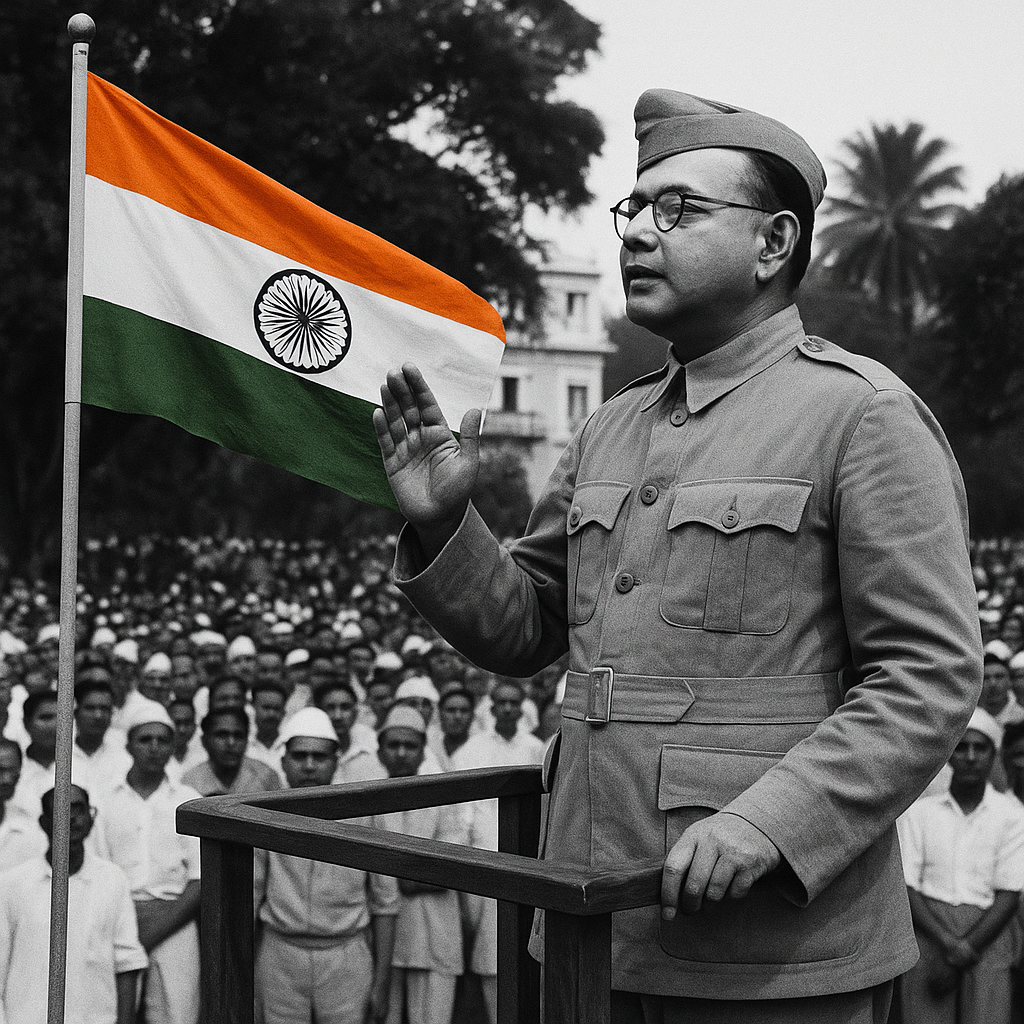Subhash Chandra Bose’s Historic Declaration of Independence in Andaman: A Defining Moment in India’s Freedom Struggle
On December 29, 1943, amidst the chaos of World War II, a significant chapter in India’s freedom struggle was written when Subhash Chandra Bose declared independence for the Andaman Islands. This pivotal event marked a moment of hope and courage for millions of Indians yearning for liberation from British rule. The Andaman Islands, strategically located in the Indian Ocean, had been occupied by Japan since 1942, making them the first Indian territory officially proclaimed free under Bose’s leadership.
The setting was Port Blair, where Bose, the leader of the Azad Hind Government and the Indian National Army (INA), stood valiantly at the Gymkhana Ground—now known as Netaji Stadium. That day, the leaders of Japan ceremonially handed over control of the islands to Bose’s provisional government. The moment was electrifying; it encapsulated the spirit of resistance against colonial oppression. The unfurling of the Tricolor was not merely a political statement, but a powerful symbol of national pride and determination.
In his fervent address to the gathered crowd, Bose expressed gratitude towards the freedom fighters who had sacrificed their lives, particularly those who endured the horrors of the notorious Cellular Jail. Drawing parallels between this significant moment and the fall of the Bastille in France, he emphasized that liberation was imminent. As per the report by India.gov.in, this act was intended as a rallying cry for all Indians, igniting their collective aspirations for freedom.
A Symbolic Act of Sovereignty and National Pride
The renaming of the Andaman Islands to Shaheed Dweep (Martyrs’ Island) and the Nicobar Islands to Swaraj Dweep (Freedom Island) further solidified Bose’s vision of a free India. These names were a tribute to the sacrifices made by countless revolutionaries who fought valiantly against colonial oppression. Even though the islands were still under Japanese control, the renaming signified a symbolic claim to sovereignty and a declaration that the fight for freedom would continue until complete independence was achieved.
The strategic importance of the Andaman Islands can’t be overstated. Located between India, Myanmar, and Indonesia, these islands have long been coveted by various colonial powers. From the Dutch to the British, and at the time, Japan, the islands were a geopolitical prize. By declaring them free from British rule, Bose made a bold claim that would signal to both the oppressors and the oppressed that the struggle for independence was far from over.
Bose’s presence in Port Blair was filled with patriotic fervor, as crowds gathered to witness this historic event. The atmosphere was charged with hope and excitement, as people believed this moment offered a glimpse into the future of an independent India. Bose’s commitment to the cause was unwavering, and he promised his supporters that the INA would set foot on Indian soil before the end of 1943—a promise that he fulfilled on that momentous day.
Reflections on the Andaman Declaration
While the Andaman Declaration did not lead to immediate independence, it represented a vital step in a long battle against colonial rule. The act of unfurling the Tricolor on Indian soil for the first time in years ignited a sense of nationalism and unity among Indians. For many, it was a profound moment, marking a departure from despair towards optimism and hope.
Even after the declaration, the Japanese occupation continued, and the realities of war complicated the situation. Nevertheless, the actions taken by Bose played a significant role in empowering future generations of freedom fighters. His determination to liberate India from colonial rule inspired many and instilled a renewed sense of purpose amongst those who longed for independence.
This declaration is a reminder of the sacrifices made by countless individuals who fought against tyranny and oppression. It stands as a testament to the unyielding spirit of the Indian populace who tirelessly worked towards a common goal: the liberation of their homeland.
Continuing Legacy of Subhash Chandra Bose
The legacy of Subhash Chandra Bose continues to resonate in India today. As the country prepares to celebrate its 79th Independence Day, the Andaman Declaration of 1943 becomes an essential point of reflection. It symbolizes a pivotal moment in history, revealing the struggles and sacrifices that defined the journey to freedom.
As India acknowledges its independence, it is crucial to revisit such moments in history, which not only shaped the nation but also inspired a strong sense of identity and resilience. Bose’s vision of a free India remains relevant, as it embodies the aspirations of generations who sought justice, equality, and sovereignty.
As we reflect on Bose’s impactful declaration, it is essential to recognize the sacrifices of those who fought for India’s freedom. The Andaman Declaration serves as an enduring reminder of the power of perseverance and the relentless pursuit of liberty. This spirit continues to inspire individuals across the globe as they work towards justice and equality in their own contexts.
For more insights into India’s freedom struggle and significant encounters like the Andaman Declaration, check out our articles on Bose and His Legacy and The 1943 Declaration: A Historic Moment.
The Andaman Declaration is a shining beacon of hope and resilience that paved the way for India’s ultimate independence in 1947, an achievement that was fought for by countless brave souls. Subhash Chandra Bose’s vision and dedication continue to inspire the nation, reminding us that the quest for freedom is not just a historical event but an ongoing journey.


